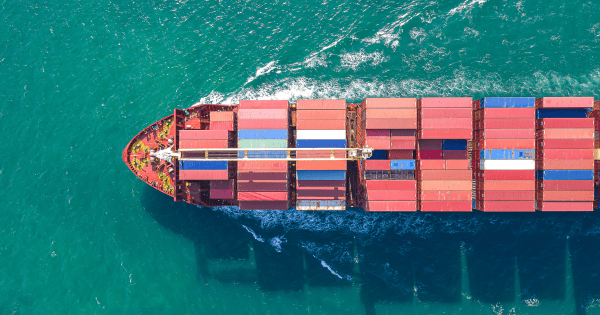You may have heard of a Bill of Lading document, or BOL, but do you know what it entails? For companies that rely on the transportation of materials, a BOL is essential to ensure everything goes smoothly. Read below to learn how businesses can utilize a Bill of Lading in their logistics process.

Definition
The most simple definition of a Bill of Lading (BOL) is a legally binding document issued by a carrier to acknowledge receipt of cargo for a shipment. The shipowner or a representative then signs said BOL to prove that the carrier received the shipment. A BOL can also serve as a document of title, allowing the transfer of ownership of the goods
This type of document is essential to freight shipping, international trade, and logistics, which companies like Trivergix Logistics excel at.
A Bill of Lading goes beyond a mere invoice of the cost and payment of transportation services, which is what a freight bill encompasses. A BOL can be understood by defining both main parts. A bill is a statement of charges, which in the world of logistics is for products or services a buyer receives from a supplier. Lading refers to loading cargo into a vessel. From these definitions, we can define a Bill of Lading as an agreement between the shipper and carrier that includes specific terms and logistics.
Why Use a BOL?
Bills of Lading serve multiple practical functions for all parties involved in the transportation process. Companies mainly use a BOL because it serves as a contract for shipping details.
Companies can easily prevent or dispute delays and confusion by clearly outlining the terms of a Bill of Lading. Additionally, the consignee clearly becomes the liability owner when the shipper gives them the original Bill of Lading. Lastly, a BOL is a receipt of the materials being shipped and is considered the title of these goods. Bills of Lading include information on the shipped goods’ number, volume, weight, and classification.
Who Issues a BOL?
A Bill of Lading is issued by the carrier of the goods or an authorized agent. A common type of agent is a Non-Vessel-Operating Common Carrier (NVOCC). An NVOCC performs the services of a carrier but doesn’t own any vessels. The carrier company for the shipment issues a BOL to the shipper, who can then transfer it to the consignee.
The buyer takes responsibility for the shipment throughout this process, and the shipping company is no longer liable. For this process to go smoothly, it’s essential for the issuer to keep the original copy of the BOL. Depending on the agreement between the companies involved, the port or destination can present the original copy to the carrier as a contract to have the shipment materials released.
Key Components
Each Bill of Lading contains three main components. A BOL document includes a title to the goods described, a receipt for the transported goods, and a contract describing the terms and conditions of the shipment. Since Bills of Lading serve as both a contract and a thorough instructional manual for the shipping and delivery process, these documents contain a significant amount of information.
The information contained in a Bill of Lading can be divided into who, what, where, when, and how.
- Who: The contact information of the three main parties involved are always included. These are the shipper of the materials, the carrier responsible for the shipment, and the recipient. In some cases, there may also be a notify party added to this list if they aren’t a consignee or recipient.
- What: The quantity, dimensions, weight, number, and value of the specific products the company is shipping
- Where: Details on the destination where the carrier will receive the shipment
- When: Scheduling details such as the ship date, deadline, and requested date for arrival
- How: The transportation system and class, delivery services required for the materials, the terms of transportation, and any specific handling information
What Types Are There?
There are many specific types of BOLs, which can quickly get confusing. Luckily, Trivergix Logistics is here to help.
The most common forms of Bills of Lading include:
- Uniform, or Straight Bill: This is the most commonly used form of a BOL. This bill indicates a consistent transportation mode. Companies also use a straight bill when shipping materials to a carrier who has pre-paid. For this reason, this BOL is non-transferable, and only the consignee can receive it.
- Negotiable Bill: A negotiable bill allows for a change of cargo ownership or consignee. If the shipment is in the condition described, a carrier can transfer it to a third party.
- Claused Bill: A claused bill expresses that the goods were inspected and found to be damaged or not as described in the original statement. This records issues noticed during the loading, transit, or unloading process.
- Clean Bill: Carriers may issue a clean bill after inspecting the shipped materials. A clean bill states that the consignee received the goods and that they are in the described condition.
- Through Bill: This bill assists both domestic and international transportation since it covers multiple transportation methods and carriers. Carriers often require a thorough bill for the export of goods transported globally, which Trivergix Logistics specializes in.
- Ocean Bill: An ocean bill is used in shipments transporting materials over international waters.
- Inland Bill: Carriers use this type of bill for shipments carried inland, such as via road or railway.
Now you know all about Bill of Lading documents and can utilize them in your business. If you need a trusted team to help ship and install items for your company, Trivergix Logistics is here to help. Contact us today to get started.
